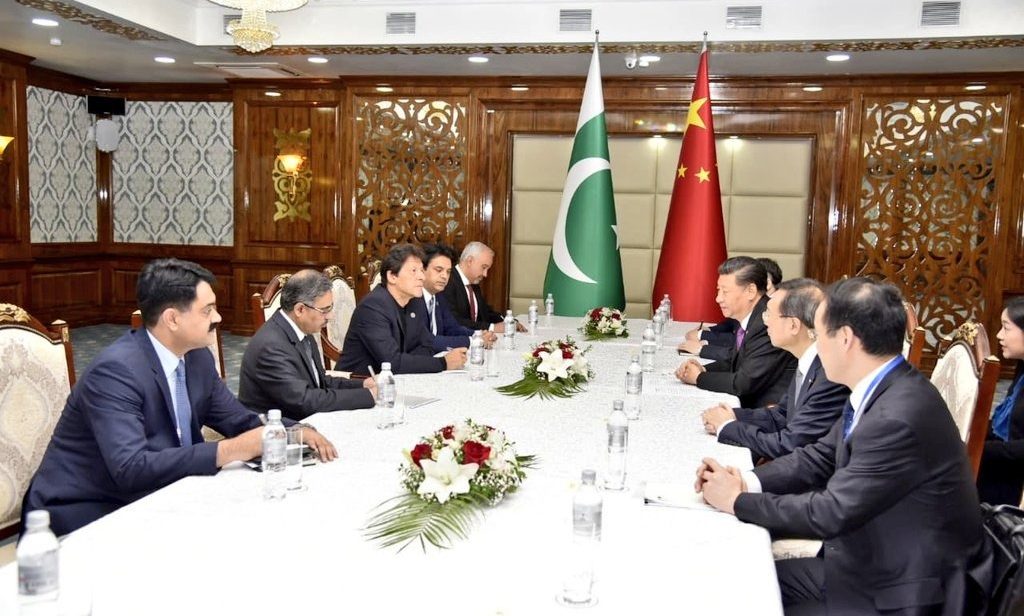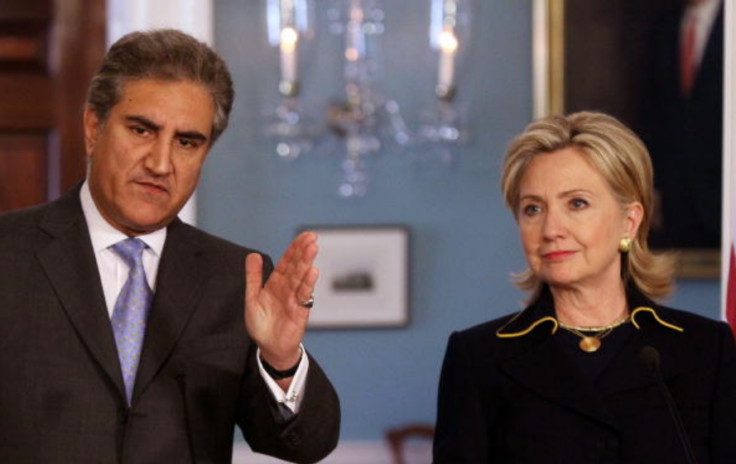
As effects of the deteriorating U.S-China relationship begin to loom over South Asia, Pakistan will need to tread carefully. The tense nature of U.S.-China relations and the deepening U.S. strategic partnership with India are likely to put Pakistan in a precarious strategic position. With a new administration coming into office in the United States, the future of U.S.-Pakistan ties will increasingly depend on how the United States carries forward its relations with China and India. Under a Biden administration, Washington is more likely to deal less harshly with Beijing as compared to the Trump administration, however, a drastic change in relations with New Delhi seems unlikely and competition with China is likely to remain for years to come. It is in Islamabad’s interests to promote positive ties with both China and the United States, and it will need to adopt a balanced approach to maintain strategic equilibrium with both countries.
However, even if Pakistan would prefer not to take sides in a U.S.-China rivalry, the U.S.-India strategic partnership may force it to do so. Therefore, it is important for Pakistan to continue stressing the consequences of an unconditional U.S-India strategic partnership on regional stability and how this partnership may force Pakistan in difficult and unwanted position.
U.S.-India Cooperation: BECA, LEMOA, and COMCASA
With a new administration coming into office in the United States, the future of U.S.-Pakistan ties will increasingly depend on how the United States carries forward its relations with China and India.
India, it seems, has already made a choice—how far it is ready to go in this relationship, however, remains to be seen. Since 2016, India’s growing strategic partnership, under agreements such as the Logistics Exchange Memorandum of Agreement (LEMOA), Communications Compatibility and Security Agreement (COMCASA), and the recently signed Basic Exchange and Cooperation Agreement (BECA), has demonstrated India’s preference to side with the United States. These agreements opened the doors of long-term strategic and military cooperation between the two states to counter the expanding influence of a common and an immediate military threat from China. Additionally, the U.S. Strategic Framework for the Indo-Pacific (declassified in the final days of the Trump administration) also stresses the need to build India’s capacity as a Major Defense Partner in South Asia to counterbalance China. However, India still cannot afford to isolate itself from China due to trade dependence with its northern neighbor. Even with the Ladakh conflict unresolved, and despite social media campaigns to boycott Chinese products gaining momentum, China remains India’s largest import partner—representing 16 percent of imports. A boycott of Chinese products to replace them with indigenous ones would still hurt the Indian economy, therefore, complete disassociation from China does not appear a viable option for India.
As policymakers in Washington are eager to boost ties with India to counter China, the adverse consequences of the U.S.-India defense partnership may be borne by Pakistan. Chinese military forces are modernizing to compete with the United States. This, in turn, deters India from engaging in a serious military conflict with China. As noted above, New Delhi is also not in a position to burn bridges with China, and thus may seek to avoid a military confrontation. In contrast, the Indian military arsenal could be deployed against Pakistan, and Pakistan is concerned that New Delhi might be more inclined to direct its new arms against Pakistani targets instead of Chinese ones. As Pakistan modernizes and builds up its own arsenal in response to India, this is likely to not only create a security dilemma and regional instability, but also set-off an arms race in the region that can prove to be catastrophic.
Pakistan’s foreign policy goals ought to focus on putting forth this critical evolving situation in South Asia before the major world players and on articulating how this might unfold in the future. There is a risk of unintended escalation and inadvertent hostilities with ongoing military support to India by the United States. Pakistan understands, however, that the United States and India strategic partnership holds little hope of a rollback in the immediate future. However, if the United States wishes to play the role of regional stabilizer, as it has in the past, it will need to revisit a relationship that primarily focuses on India as the U.S. partner in South Asia.

Strategic Balancing in Pakistan-China Ties
Nonetheless, Pakistan cannot rely entirely on the United States to provide it with security, especially given the deepening of the U.S.-India strategic partnership. This makes it imperative for Pakistan to maintain close ties with China. Moreover, since Pakistan only has limited access to latest warfare technologies as compared to India, in order to maintain the strategic stability with India, Pakistan needs to acquire emerging defense systems. Pakistan may look to pursue defense cooperation with China, particularly in cyber and space infrastructure due to better prospects of devising sustainable defense solutions in a hybrid war. Defense cooperation with China to close the strategic imbalance gap might fall under domains of autonomous systems, artificial intelligence, air defense systems, and quantum computing.
Besides China’s assistance in modernizing the country’s military, it has also revived Pakistan’s significance by planning to link it to the rest of the world through China Pakistan Economic Corridor (CPEC). Pakistan, a developing country ridden with socio-economic problems, cannot forgo the development potential of CPEC. CPEC not only holds economic imperatives for Pakistan but the region as whole. Outright U.S. military, technology, as well as energy support to India is likely to compel Pakistan to deepen its economic ties with China to try to bolster its own economic strength to compete with India. This may impact Pakistan and the U.S relations as it will put the two states into camps of other’s opponent, and close doors for areas of potential economic cooperation.
Potential Areas of U.S.-Pakistan Cooperation
Although cooperation with China will elevate Pakistan in the economic and military domains, this does not have to overshadow positive relations with the United States as an old ally. In order to augment U.S.-Pakistan cooperation, both states need to understand the other’s national security concerns and adopt a more neutral approach. For instance, Pakistan should refrain from endorsing either China or the United States’ position on issues such as Hong Kong or the South China Sea, and similarly, the United States should avoid favoring India or Pakistan in bilateral security issues—as it appeared to do during the Pulwama/Balakot crisis.
Now, in a multipolar world, as the Pakistan-U.S. relationship is increasingly shaped by the roles of China and India, it is not necessary for the two countries to move towards disengagement.
The CPEC component of China-Pakistan relations in particular was viewed with suspicion by the Trump administration, as it found faults such as debt trap and the infrastructural development program from a strategic angle. Pakistan can dispel such suspicions in Washington by appointing a non-military person as authority of CPEC project. Meanwhile, the Biden administration should be cautious of falling into rivalry trap with China when it comes to CPEC and stop posing the unreasonable “us” or “them” options for Pakistan. The Pakistan government must allay the doubts of Washington while both sides advance people-to-people relations in areas of education, immigration, and health.
The past two decades of U.S. presence in South Asia have been significant in shaping the region’s security dynamics. Now that after 19-years of conflict, warring sides in Afghanistan have finally come to the negotiating table, cooperation between the United States and Pakistan is crucial as both states need a satisfactory solution to end years of turmoil in the region. Pakistan has landed the role of a third key player in the Afghan peace process, highlighting the fact that despite the highs and lows of U.S.-Pakistan bilateral relations, Islamabad will always occupy a unique position in Washington’s security calculus. Given that Pakistan has improved its shifting relations with the United States through its role in the Afghan peace process, it is now time for the United States to pay attention to potential regional instability that may result from its military support to India.
Now, in a multipolar world, as the Pakistan-U.S. relationship is increasingly shaped by the roles of China and India, it is not necessary for the two countries to move towards disengagement. Disengagement risks damaging U.S. acceptance in Pakistan while pushing Pakistan closer to China unwillingly and ultimately impacting U.S. interests in the region, such as Afghanistan or regional stability.
***
Click here to read this article in Urdu.
Image 1: Prime Minister’s Office, Pakistan via Twitter
Image 2: Mark Wilson via Getty Images


